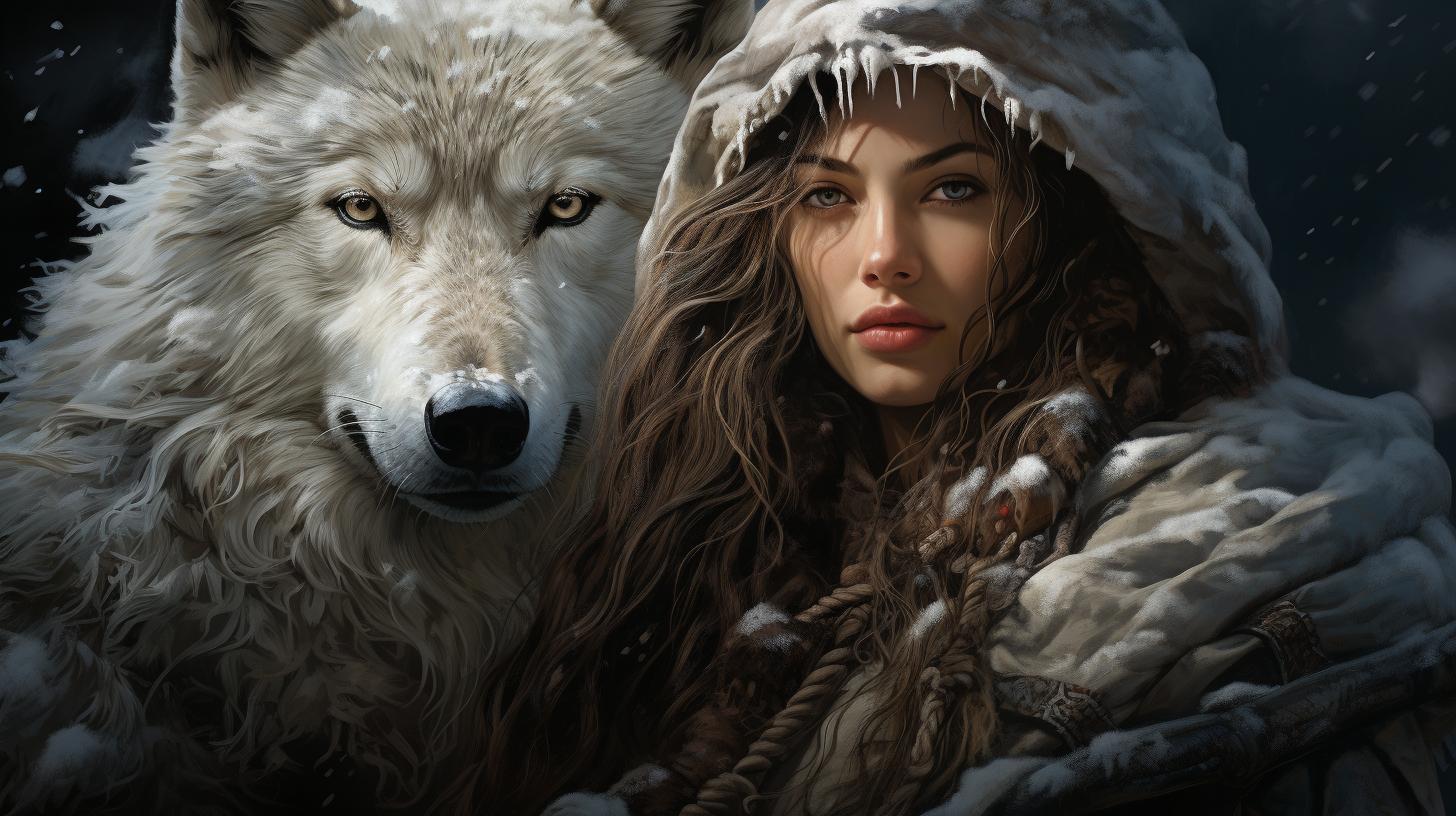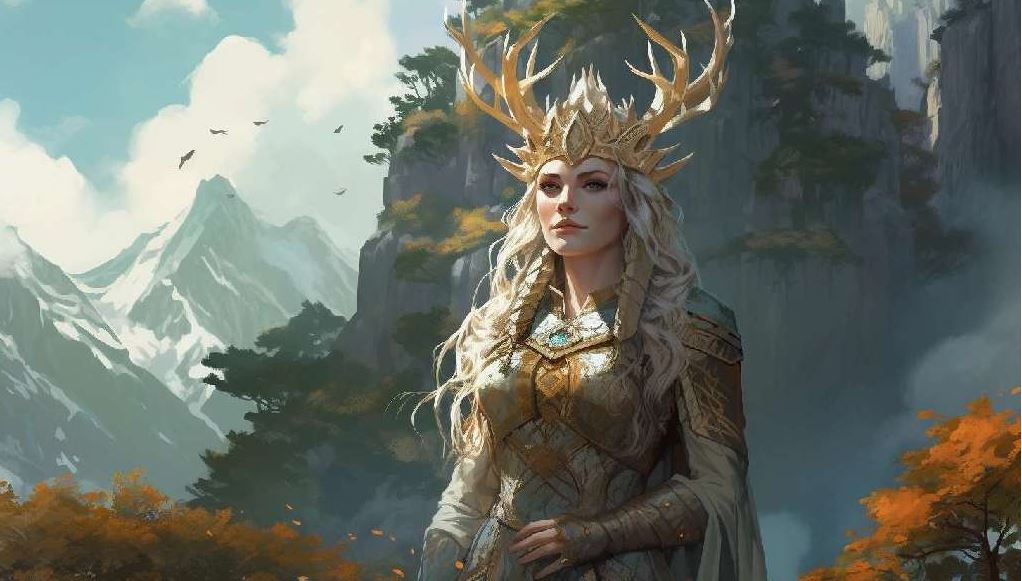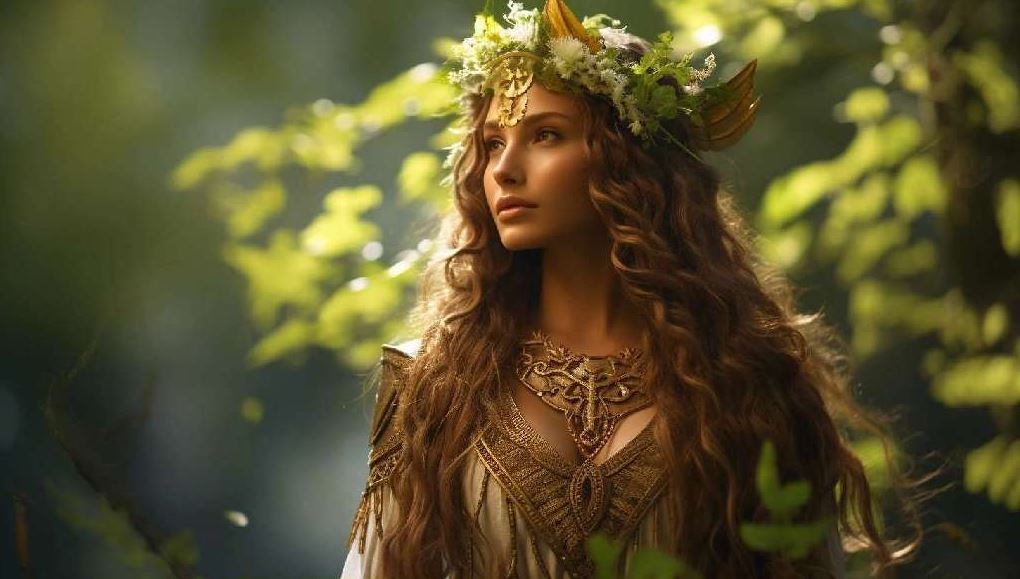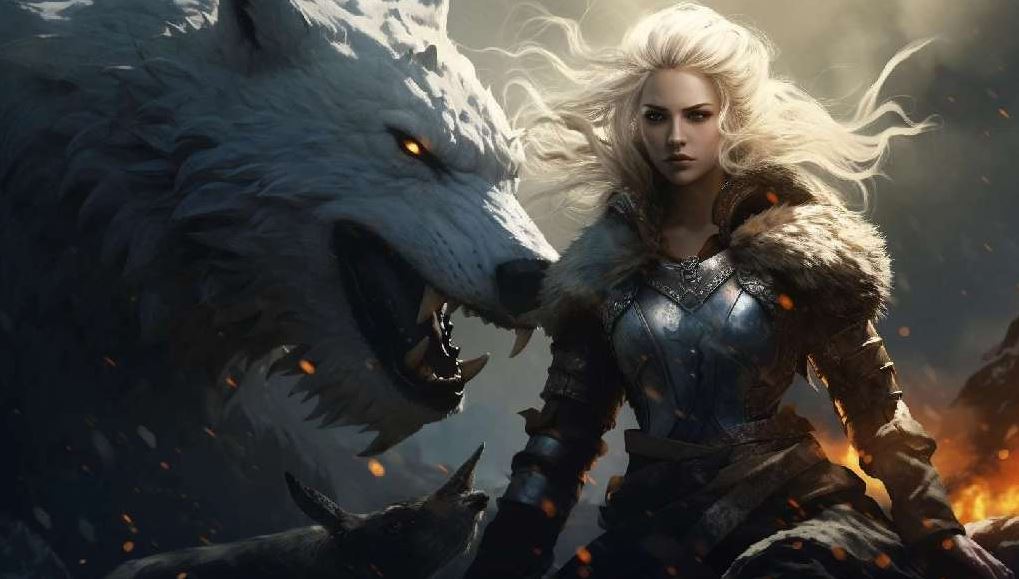Nerthus Norse Goddess: Unveiling the Mysteries of the Germanic Deity
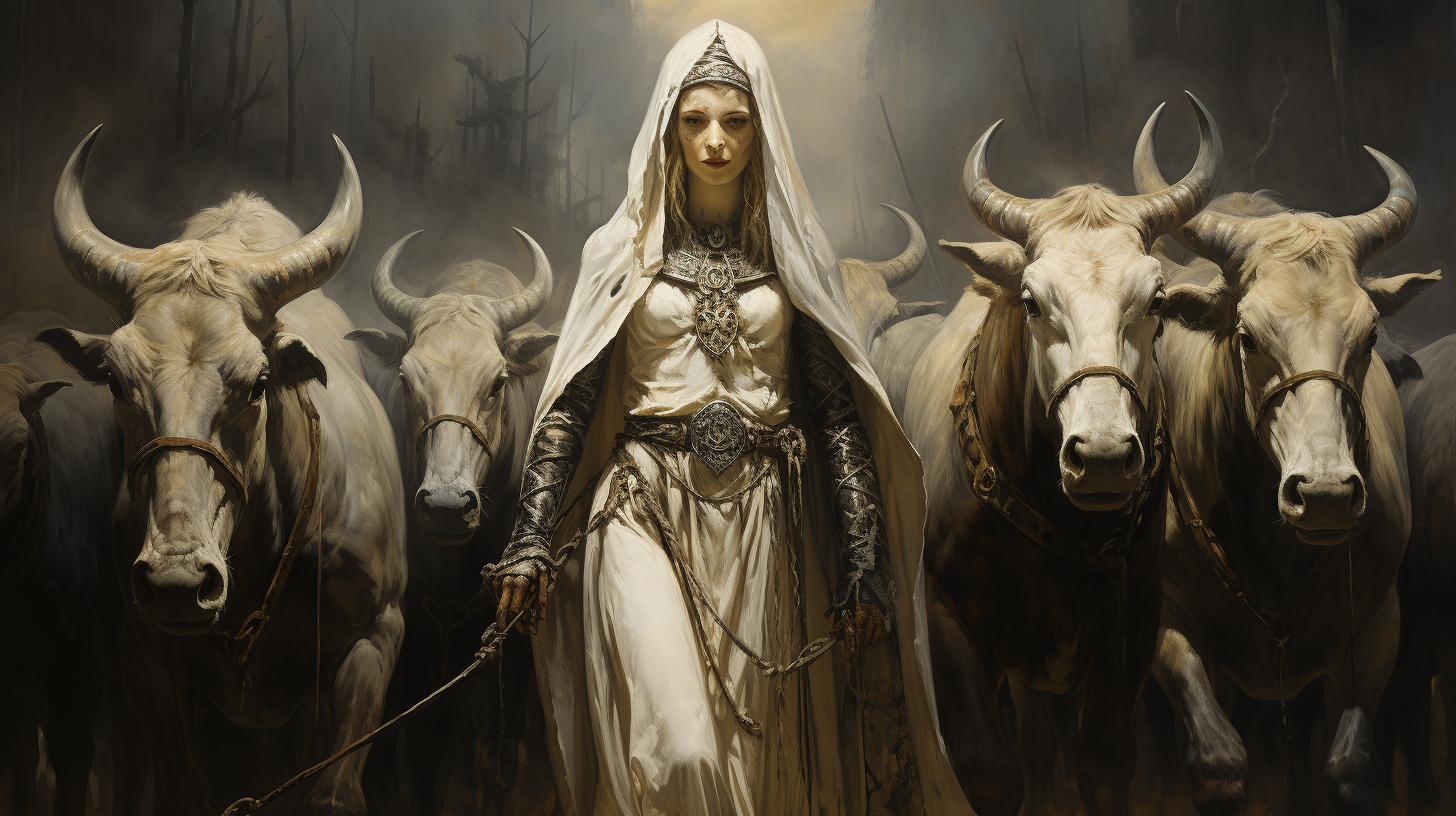
Nerthus, the Norse goddess in Germanic mythology, holds a significant role in ancient beliefs. She is associated with a ceremonial procession featuring a sacred carriage, covered in a white cloth and pulled by cows.
During this event, war is forbidden, and iron objects are secured. The priesthood plays a crucial role in worshiping Nerthus, a deity linked to peace and fertility. Although primarily known from Roman accounts like Tacitus’ ‘Germania,’ recent archaeological evidence, such as the Dejbjerg carriage and the Oseberg ship, supports the existence of Nerthus and her importance in Norse culture.
The influence of Nerthus extends beyond ancient times, impacting popular culture and modern Germanic paganism. Scholars speculate that Nerthus may have been connected to the Vanir tribe and possibly a consort of the sea god Njord. As research progresses, new discoveries and interpretations shed light on Nerthus’ mysteries.
She represents the embodiment of peace and prosperity, with ties to the earth and healing. The legacy of Nerthus continues to resonate today, maintaining relevance in the exploration of pre-Christian Germanic beliefs and the Viking Age.
Who is Nerthus?
Within the realm of Norse mythology, Nerthus holds a significant position as a revered deity. Let us embark on a journey to explore the various aspects of Nerthus, shedding light on her origins, role in Norse mythology, and comparisons with other divine beings.
Overview of Nerthus and Her Role in Norse Mythology
Nerthus, also known as the Germanic goddess, occupies a pivotal role in the ancient Norse belief system. She is associated with peace, fertility, and nature. As we delve deeper into her mythological significance, we encounter tales of her divine presence and the impact she holds over the mortal realm.
The Origins and Family of Nerthus
The roots of Nerthus can be traced back to the ancient Germanic tribes. Though little is known about her exact familial ties, there are speculations that she may have been a consort of the Norse sea god, Njord. Exploring her origins provides valuable insights into her divine lineage and connections within the Norse pantheon.
Comparisons between Nerthus and Njord
When examining Nerthus, it becomes apparent that she shares similarities with Njord, the prominent god of the sea in Norse mythology. Both deities exhibit associations with nature, fertility, and the sea.
Unraveling the parallels and potential connections between Nerthus and Njord adds depth to our understanding of their roles within Norse mythology.
The Procession and Worship of Nerthus
The worship of Nerthus, the Norse goddess, revolves around a grand procession that holds great significance in Germanic paganism. This elaborate ceremony features the presence of a sacred carriage and various rituals associated with the deity.
Let’s explore the key elements that make up the worship of Nerthus.
The Sacred Carriage and Rituals Associated with Nerthus
Central to the procession is the sacred carriage of Nerthus. According to ancient accounts, this carriage was located on an island in the ocean, nestled within a sacred forest. The carriage itself was adorned with a white cloth, symbolizing its divine nature.
It is believed that only a single priest had the privilege of touching the carriage, for it was considered a vessel of immense spiritual significance.
The Symbolism of the White Cloth and the Island Setting
The white cloth that enveloped Nerthus’ carriage held profound symbolism in Germanic belief. White often represents purity and divinity, emphasizing the sacred nature of the procession. The island setting added an aura of mystery and seclusion, elevating the significance of the journey.
This remote location underscored the transcendent nature of the goddess and created a sense of reverence among the worshippers.
The Role of the Priest and the Significance of Cows
During the procession, the priest played a pivotal role as the mediator between the mortal realm and the divine presence of Nerthus. Only with the priest’s guidance and blessings could the worshippers approach the sacred carriage and partake in the rituals.
Additionally, the presence of cows during the procession held great symbolism, as they were the chosen animals to pull the carriage. This further emphasized the connection between Nerthus and fertility, as cows represent abundance and prosperity.
Lifestyle Changes during Nerthus’ Procession
One of the remarkable aspects of Nerthus’ procession was the temporary cessation of warfare and the safeguarding of iron objects. This period of tranquility reflected the goddess’ association with peace and harmony.
It was believed that during this time, conflicts were set aside, promoting a collective reverence for the divine and fostering unity among the worshippers. The prohibition of iron objects ensured a state of purity and respect during the sacred occasion, strengthening the spiritual bond with Nerthus.
In conclusion, the procession and worship of Nerthus in Germanic paganism are characterized by the presence of a sacred carriage, intricate rituals, and a deep reverence for the goddess. Through the symbolism of the white cloth, the role of the priest, and the temporary changes in lifestyle, worshippers sought to honor Nerthus’ role as a bearer of peace and prosperity.
Influence and Representation of Nerthus in Norse Mythology
Nerthus, the Norse goddess, holds a significant place in mythology and has left a lasting impact on various aspects of Norse culture. This section delves into her influence, starting with an analysis of Roman accounts in Tacitus’ ‘Germania’, exploring her representation in Old Norse texts, her connections to other Norse gods and goddesses, and her enduring presence in popular culture and modern times.
Nerthus in Roman Accounts: Tacitus’ ‘Germania’
Tacitus’ work in ‘Germania’ provides valuable insights into Nerthus and her worship. His account describes the sacred procession and rituals revolving around Nerthus. The Roman perspective sheds light on how she was perceived by outside observers and highlights her significance among the Germanic peoples.
This account serves as a foundation for understanding Nerthus’ role in Norse mythology.
Nerthus in Norse Mythology: An Analysis of Old Norse Texts
Delving into Old Norse texts allows us to explore how Nerthus was portrayed within the Norse mythology itself. These texts provide additional details and mythology surrounding the goddess, offering a deeper understanding of her place in the Norse pantheon.
Analyzing these sources enables us to uncover different aspects of Nerthus’ character and her interactions with other gods and beings.
Connections to Other Norse Gods and Goddesses
Nerthus’ connections to other Norse gods and goddesses are of great importance in understanding her role and significance within the pantheon. Exploring these connections helps us identify potential familial relationships, connections through shared attributes or domains, and the influence she had on other deities.
By examining these connections, we can gain a broader perspective on Nerthus’ role in Norse mythology.
Nerthus’ Influence on Popular Culture and Modern Times
While knowledge about Nerthus primarily stems from Roman accounts and Old Norse texts, her influence extends beyond the realm of ancient mythology. Her image and symbolism have found their way into popular culture, with representations in literature, art, music, and other forms of media.
Additionally, modern Germanic paganism continues to draw inspiration from Nerthus, preserving her legacy and ensuring her continued relevance in our contemporary understanding of Norse mythology.
Rediscovering Nerthus: Archaeological Evidence and Research
In this section, we delve into the exciting field of archaeological evidence and research that sheds light on the enigmatic Nerthus and her significance in Norse mythology. Through the exploration of sacred carriages, findings similar to Tacitus’ description, and new discoveries, we aim to unveil the mysteries surrounding this ancient Germanic goddess.
Sacred Carriages and Similar Findings
Archaeologists have unearthed intriguing artifacts that resemble the sacred carriage described by Tacitus. These discoveries provide valuable insights into the rituals and practices associated with Nerthus’ worship. As excavations continue, we uncover the remains of elaborate carriages, adorned with symbols and intricately crafted details.
These findings offer clues about the symbolism and cultural importance attributed to Nerthus as a divine figure.
Oseberg Ship and Dejbjerg Carriage: Comparisons to Tacitus’ Description
The Oseberg Ship, discovered in Norway, and the Dejbjerg Carriage, found in Denmark, are significant archaeological finds that bear striking similarities to Tacitus’ description of Nerthus’ sacred carriage. These well-preserved artifacts provide tangible evidence of the rituals and beliefs associated with the goddess.
Through a comparative analysis, experts draw connections between these discoveries and Tacitus’ written accounts, shedding further light on the practices honoring Nerthus.
Unveiling the Mysteries: New Discoveries and Interpretations
Continued research and analysis of archaeological findings contribute to the ongoing discovery of new evidence related to Nerthus. These findings challenge previous assumptions and broaden our understanding of the goddess and her worship.
Updated interpretations and fresh perspectives offer a deeper appreciation for Nerthus’ role in Germanic mythology and her significance within the broader Norse pantheon.
The ongoing efforts of archaeologists, historians, and scholars to uncover and interpret these findings provide a fascinating glimpse into the religious practices and cultural traditions surrounding Nerthus. As we delve deeper into this field, we gain a clearer understanding of the reverence and influence she held in the ancient Germanic world.
Through archaeological evidence and research, we take important steps toward rediscovering Nerthus and the mysteries that surround her divine presence.
Nerthus: the Goddess of Peace and Fertility
Nerthus, the goddess of peace and fertility, plays a significant role in Norse mythology. Associated with the Germanic tribes, she is revered for her ability to bring tranquility and prosperity to the land.
The worship of Nerthus emphasizes the importance of harmony, abundance, and the interconnectedness between humans and nature.
Nerthus as the Bringer of Peace and Prosperity
As the goddess of peace, Nerthus symbolizes the cessation of hostilities and the restoration of harmony within communities. Her presence during the procession signifies a time where conflict is set aside, and people come together to celebrate unity and abundance.
Nerthus’ role in fostering peace highlights the peaceful aspirations of ancient Germanic societies and their desire for a harmonious existence.
The Association between Nerthus and Mother Earth
Nerthus is closely linked to the concept of Mother Earth and the life-giving forces of nature. She embodies the fertility of the land, ensuring bountiful harvests and prosperous livelihoods for her worshippers.
Symbolically, Nerthus represents the earth’s nurturing qualities and the importance of respecting and preserving the natural world. Her association with Mother Earth underscores the reverence for nature and its essential role in sustaining life.
Healing and Medicine: Nerthus’ Influence in Health and Well-being
Within the realm of health and well-being, Nerthus holds a significant position as a healer and protector. Her influence extends to medicinal practices and the promotion of physical and spiritual well-being.
Devotees of Nerthus often sought her guidance and blessings for their ailments, believing in her capacity to restore health and bring solace. The rituals performed during her procession included acts of purification, reflecting the belief in the cleansing and rejuvenating powers of the goddess.
- The rituals conducted during Nerthus’ procession aimed to purify and renew the community.
- Her presence was believed to bring healing to physical and spiritual ailments.
- Offerings and prayers were made to Nerthus as a way to seek her favor in matters of health and well-being.
Overall, Nerthus’ influence in matters of health and well-being emphasized the profound connection between individuals and their physical and spiritual states.
Her presence and worship offered solace, hope, and a sense of harmony within the community.
Nerthus and the Vanir: Speculations and Theories
Nerthus, the enigmatic Norse goddess, has intrigued scholars and mythologists alike with her connections to the Vanir tribe. In this section, we explore the speculations and theories surrounding Nerthus’ possible association with the Vanir and her relationship with the sea god Njord.
Nerthus’ Connection to the Vanir Tribe
Many researchers propose that Nerthus may have been closely linked to the Vanir tribe in Norse mythology. The Vanir were a distinct group of gods associated with fertility, prosperity, and nature.
Some believe that Nerthus may have been considered the embodiment of the Vanir collective, representing their shared values and powers.
While there is limited textual evidence directly linking Nerthus to the Vanir, her role as a goddess of fertility and her association with the earth align well with the domains traditionally associated with the Vanir.
This similarity fuels the hypothesis of Nerthus’ connection to this specific Norse tribe.
Nerthus’ Relationship with Njord
Another compelling theory revolves around Nerthus’ potential relationship with Njord, the revered Norse god of the sea. Some scholars argue that Nerthus may have served as a consort or partner to Njord, emphasizing their shared association with water and fertility.
Njord‘s domain over the sea and maritime activities, along with Nerthus’ role as a goddess of nature and agriculture, intertwine harmoniously. This alignment has led to the speculation that they may have been depicted as a divine couple, each contributing their unique powers to maintain the delicate equilibrium between land and sea.
While concrete evidence supporting this relationship is scarce, the correlation between Nerthus and Njord‘s roles in the natural world suggests a deeper connection and raises intriguing questions about their dynamic within Norse mythology.
- Did Nerthus and Njord engage in joint rituals or ceremonies?
- How did their partnership manifest in relation to other Norse deities?
These queries propel further investigations into the significance of Nerthus’ potential alliance with Njord and its implications for understanding Norse mythological narratives.
As ongoing research expands our understanding of the complex webs of Norse mythology, the connections between Nerthus and the Vanir tribe, as well as her relationship with Njord, fuel our curiosity and drive us to delve deeper into the fascinating realms of ancient Norse belief systems.
Nerthus Beyond the Roman Influence
Nerthus’ Status in Pre-Christian Germanic Beliefs
In the realm of pre-Christian Germanic beliefs, Nerthus held a significant status as a revered deity. She was worshipped by various Germanic tribes and played a crucial role in their religious practices.
Although specific details about her worship may vary across different regions, there is substantial evidence to suggest that Nerthus occupied a position of high reverence and importance in the Germanic pantheon.
As the goddess associated with peace and fertility, Nerthus symbolized the abundance of the land and the prosperity of the community. She was believed to bring blessings and ensure harmony among the people.
Her prominence in pre-Christian Germanic beliefs speaks to the significance of her role as a divine figure in their spiritual and cultural practices.
Relevance and Worship of Nerthus during the Viking Age
During the Viking Age, the worship of Nerthus continued to hold relevance among the Norse people. The goddess’s association with peace and fertility resonated with the warlike society, offering a counterbalance to the constant conflicts and battles of the time.
The Viking communities sought the blessings of Nerthus to ensure prosperous harvests, the well-being of their families, and the harmony of their clans.
The rituals and practices associated with Nerthus’ worship during the Viking Age were likely adapted to fit the changing societal context. However, the core beliefs and veneration of the goddess remained intact.
These rituals would have included processions, offerings, and prayers to seek her benevolence and favor.
The Legacy of Nerthus in Modern Germanic Paganism
The legacy of Nerthus continues to have a notable presence in modern Germanic paganism. Many individuals today revere and worship Nerthus as a vital deity within their spiritual practices. Her association with peace, fertility, and nature resonates deeply with those who follow Germanic pagan traditions.
Modern practitioners of Germanic paganism seek to honor and connect with Nerthus through rituals, offerings, and celebrations. They draw inspiration from the ancient practices and beliefs surrounding Nerthus to forge a deeper connection with the divine and the natural world.
Nerthus’ place in modern Germanic paganism highlights the enduring significance of her role and symbolism within the spiritual lives of those who uphold these traditions. By keeping her legacy alive, followers pay homage to an ancient goddess and carry forward the inherent wisdom and reverence associated with Nerthus in their contemporary worship.
….











